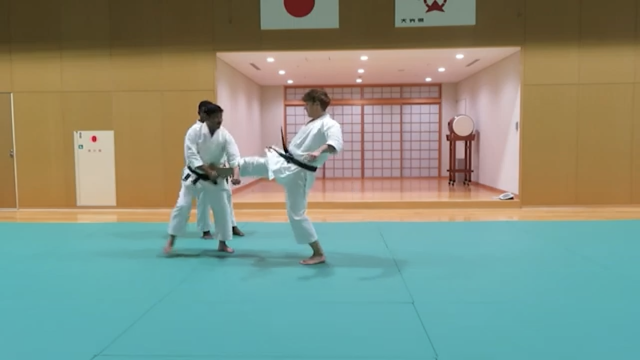 |
| Tekki Nidan (Movement 24): Hidari uraken jodan uchi/Migi zenwan munemae suihei gamae. |
Mr. Sudhir Parab (from Mumbai, Bombay) and Mr. Kailas Lohar (from Pune, Maharashta) once again came to Oita for training.
'Budo/Bujutsu KIHON' from Yakusoku-Kumite: The two hours at the dojo included Gohon Kumite, Ippon Kumite and Jiyu Kumite; with a focus on underlying budo/bujutsu fundamentals for them to improve. In particular, I had Kailas and Sudhir work on: (a) their attacks - especially pertaining to effective and optimal maai'; (b) the 'wrist/waist connection in their ukewaza; and (c) instantaneously/reactively selecting (and countering with) the most effective waza in the moment.
 |
| The correct maai to attack is what determines the effectiveness of Yakusoku Kumite practice for both the designated attacker and defender. |
I also taught variations from different angles (the criticality of 'instantaneous and fluid adaptability') and contrasted these with kekomi. Besides seiken-tsukiwaza open hand attacks were also practiced. Once again, the aim was using the lower body and core, and relaxation of the attacking limbs.
Kata: To reinforce these points Heian Shodan Kata was trained; furthermore, by their request, Tekki Nidan Kata. Certainly, kata helps to reinforce the optimal mechanics for self-defense and, whilst making movements to the extreme, allows us to also practice the more damaging actions of Shotokan -- with full speed -- without needing to care for a training partner.
Overall, it was great to see Sudhir and Kailas eyes further opened to 'old school karate' based on real world self-defense, which with all its brutal effectiveness is also a beautiful art. In sum, I wish them both the best in their Shotokan endeavors. OSU, AB.
© André Bertel. Oita City, Japan (2022).








No comments:
Post a Comment